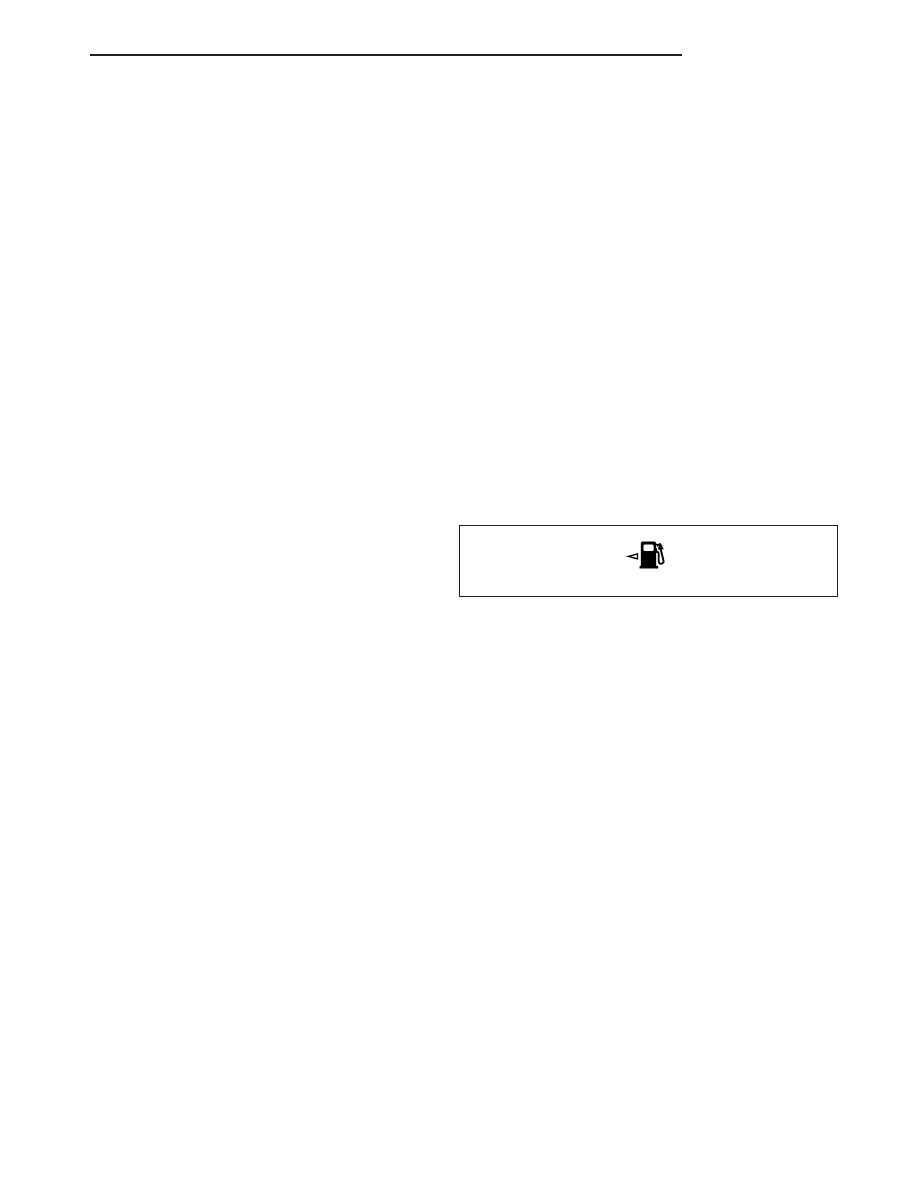Dodge Durango (HB). Manual - part 315

illuminates when it is provided a path to ground by the instrument cluster transistor. The instrument cluster will turn
on the fog lamp indicator for the following reasons:
•
Fog Lamp-On Message - Each time the cluster receives a fog lamp-on message from the FCM indicating the
fog lamp relay is energized, the fog lamp indicator will be illuminated. The indicator remains illuminated until
the cluster receives a fog lamp-off message from the FCM.
•
Actuator Test - Each time the cluster is put through the actuator test, the fog lamp indicator will be turned on,
then off again during the bulb check portion of the test to confirm the functionality of the LED and the cluster
control circuitry.
The instrument cluster continually monitors a hard wired input from the headlamp switch to determine the selected
fog lamp switch status. The instrument cluster then sends the proper fog lamp-on and lamp-off messages to the
FCM over the CAN data bus. The FCM activates the fog lamp relay then sends the proper fog lamp indicator
lamp-on and lamp-off messages to the instrument cluster. For further diagnosis of the fog lamp indicator or the
instrument cluster circuitry that controls the indicator, (Refer to 8 - ELECTRICAL/INSTRUMENT CLUSTER - DIAG-
NOSIS AND TESTING).
For proper diagnosis of the fog lamp system, the FCM, the CAN data bus, or the electronic message inputs to the
instrument cluster that control the fog lamp indicator, a diagnostic scan tool is required. Refer to the appropriate
diagnostic information.
FUEL GAUGE
DESCRIPTION
A fuel gauge is standard equipment on all instrument
clusters. This gauge is part of the minor gauge set
with the engine coolant temperature gauge located on
the left side of the instrument cluster, just left of the
speedometer. This gauge consists of a movable gauge
needle or pointer controlled by the instrument cluster circuitry and a fixed 90 degree gauge scale on the cluster
overlay that reads bottom-to-top from “E” (or Empty) to “F” (or Full). An International Control and Display Symbol
icon for “Fuel” is located on the cluster overlay, in the center of the gauge directly below the bottom end of the
scale. An arrowhead pointed to the left side of the vehicle is imprinted on the cluster overlay next to the “Fuel” icon
on the gauge to provide the driver with a reminder as to the location of the fuel filler access.
The fuel gauge graphics are black against a white field except for a single red graduation at the low end of the
gauge scale, making them clearly visible within the instrument cluster in daylight. When illuminated from behind by
the panel lamps dimmer controlled cluster illumination lighting with the exterior lamps turned On, the white gauge
dial face appears blue-green with the black graphics silhouetted against the illuminated background and the red
graphics and the red gauge needle still appear red. Gauge illumination is provided by an integral electro-lumines-
cent lamp that is serviced as a unit with the instrument cluster. The fuel gauge is serviced as a unit with the instru-
ment cluster.
OPERATION
The fuel gauge gives an indication to the vehicle operator of the level of fuel in the fuel tank. This gauge is con-
trolled by the instrument cluster circuit board based upon cluster programming and a hard wired input received by
the cluster from the fuel level sending unit on the fuel pump module in the fuel tank.
The fuel gauge is an air core magnetic unit that receives battery current on the instrument cluster electronic circuit
board through the fused ignition switch output (run-start) circuit whenever the ignition switch is in the On or Start
positions. The cluster is programmed to move the gauge needle back to the low end of the scale after the ignition
switch is turned to the Off position. The instrument cluster circuitry controls the gauge needle position and provides
the following features:
•
Fuel Level Sending Unit Input - The cluster provides a constant current source to the fuel level sending unit
and monitors a return input on a fuel level sense circuit. The resistance through the fuel level sending unit
increases as the fuel level falls and decreases as the fuel level rises causing changes in the sense input volt-
age. The cluster programming applies an algorithm to calculate the proper fuel gauge needle position based
upon the fuel level sense input, then moves the gauge needle to the proper relative position on the gauge
HB
CLUSTER
8J - 57